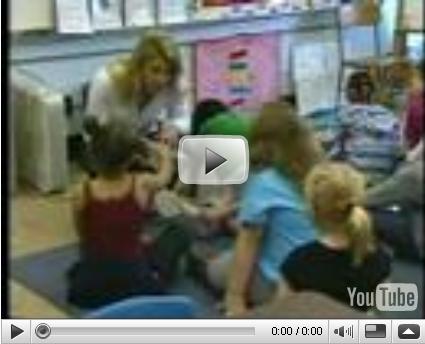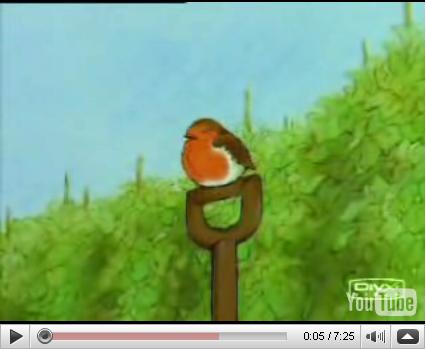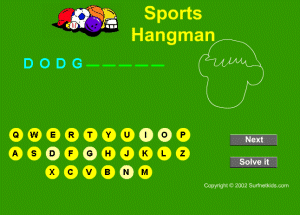BECOME A MEMBER
Join Pivotal Gold

and you have
private access to free and heavily
discounted resources (including one
book a month)
More information here
FREE
NEWSLETTER
Get news of the
latest resources, book reviews, articles
and more that have been added to the
website.

(We do not share, give or
sell email addresses)
Getting Involved in Your child's Education
When
parents are involved in their children's education, kids do better
in school. 1. Want to learn how to
help your child achieve and succeed? Read on! You'll learn
why involvement is so important and suggestions
for
how to get involved.

Angela
Maiers puzzle lesson
Angela Maiers demonstrates to 1st grade students how piecing
together a puzzle is similar to being a great reader
Quizlet
Quizlet is similar in concept to flashcards, but much more interactive. You
can create short quizzes then choose from a range of activities to perform
the quiz, share it with others or a select group or class.

Backyard Buddies are the native animals that share our built-up areas,
waterways, backyards and parks.
Backyard buddies are also the people who value native animals and plants, and want
to protect and help them.
|
|

|
PowerPoint
Reform: a first chapter
After 10 years, it was time. We could
not sit through another bullet-ridden,
brain-numbing student presentation. We
interviewed the kids. For them it was
just as bad.
They dreaded each others' PowerPoints.
Though we've been using other tools for
communication, sometimes the slideshow
really seems the best choice.
We knew that presentation styles had
changed. At conferences and on websites
we'd seen so many effective examples.
But we knew that breaking 10 years of
bad habits was going to be a process.
And with PowerPoint so ingrained in our
culture, we also expected a fight.
So, with Senior Seminar research
presentations looming, about two months
ago we began our focus on change.
Technology coach
Ken Rodoff and I worked with
classroom teachers to break bad habits.
We worked with one English class
preparing presentations on Ethan
Frome and four Senior Seminar
classes.
What we shared:
-
We told the students to aim for
no bullets. Aim for just
one word or phrase on a slide.
-
We told them to aim for one
powerful image on a slide. That
image could be accompanied by
minimal text or no text at all.
-
Clipart was banned. (Well, we
tried.) Why should anyone use canned
art in a landscape where the people
of the world are generously sharing
original media?
-
We pointed students to our
Copyright Friendly Images pathfinder,
our
Image Generator Pathfinder, and
to
Flickr's Creative Commons Pool.
We told them to search for images
conceptually rather than literally.
For interest, what images would
photographers tag to represent
"lonely"or "cold"? We also told them
to create their own images.
-
If they needed to include a
quote, students were to look for the
nugget within the quote.
To shorten it as much as possible.
To discover its essence.
-
We told students that slides
were cheap. In fact, they are free.
Use as many as you need. Run
through some quickly. Stay on some a
while. Consider the pace required by
the slide or the thought. We got rid
of requirements like: include
fifteen slides--one should be your
introduction, one should include
your thesis, five should include
specific evidence, etc. (Works
cited or credit slides were, of
course, required.)
-
We told students to be creative
in grabbing and maintaining
attention. There was no formula for
presentation. Think outside the
box.
-
We echoed the words of one
student from a class unit we piloted
last year--"the slides are for the
audience; they are not for me."
-
We reminded students of
rhetorical devices. One classroom
teacher showed students exemplars of
good speaking techniques using
TED's impressive archive of
inspiring speeches.
What we discovered:
-
On the whole, the students who
listened to us did better
presentations. Their slides looked
way better. They looked
modern--without the 90s digital
accent. (With the exception of one
dedicated WordArt fan.)
-
Without their bullets, students
were forced into storytelling. They
connected with their audience.
-
Those students who chose to
ignore our advise and continued to
use bullets, kept turning to look at
their slides. When the audience saw
a slide appear with five or six
bullets, you could almost see them
sigh. The presenter also appeared
tired when faced with the prospect
of covering all those bullets. You
could also hear quiet snickers when
a student chose to use clipart.
Issues:
-
The Ethan Frome group
whined incessantly during our first
lesson. They couldn't believe we
wanted them to lose the bullets.
"How do you expect us to know what
to say?" We recognized that we were
breaking 10 years of bad habits.
After a while, however, the students
got involved with the aesthetics of
their slides. Many of those slides
convincingly evoked a cold New
England winter.
-
Students who weren't prepared
appeared less prepared. If they
didn't know their content, it was
clear.
-
Some students are better
storytellers than others. It was
clear.
-
Some students got a little too
involved in slide design. They kinda
overlooked sharing their compelling
thesis or their evidence.
Overall:
-
The students learned about
communication and what makes an
effective presentation. The
presentations revealed both good and
bad models and the student audience
seemed to know the difference.
-
Many students thought outside
the box. The spoke to their
audience. They used humor. They
used rhetorical devices--quotes,
metaphors, repetition, questions,
etc. We saw audience engagement and
we suspect that some of the
presentations inspired learning.
-
Many students appeared truly
pleased with their new and improved
products.
-
We'll know a little more as we
interview the students and get more
of their reactions. (More on this
later.)
-
We know we have much more work
to do.
-
We know we need to work further
with teachers on what to value. We
need new rubrics.
-
The lesson was sticky. We could
tell students will continue to use
these new strategies.
*********************************************************
Among the resources we used:
 Posted by
Joyce Valenza Posted by
Joyce Valenza |

Watch a video of Peter Rabbit by
Beatrix Potter

 Teaching Outside
the Box: Teaching Outside
the Box:
How to Grab Your
Students By Their Brains
by LouAnne Johnson
This book is a must for beginning teachers and for pros who need
new ideas. It combines street smart practicality
with the creative thinking we need to reach kids
today.
Try RocketReader Kids


|
The ultimate child reading tutor. Ages 4
to 8.
For
children, sight word
recognition is an
important step to
being able to
efficiently learn to
read. If they don’t
have to stop and
consider what each
word is, they will
have the freedom to
comprehend the
meaning and context
of sentences and
paragraphs.
Consequently, it’s
critical for
parents,
babysitters,
guardians,
grandparents and
educators to help
beginning readers
How good is your knowledge of
sports?
Play Sports Hangman
Mapping our world
Discover a unique perspective on the
world with this interactive
whiteboard resource for ages 8-14.
 Catch the Fly Catch the Fly
Mr. Frog needs you to give him the x, y coordinates for a fly so he can
dine. Type in the correct coordinates of where the fly lands to feed the
frog.
 The
Courage to Teach: Exploring the
Inner Landscape of a
Teacher's Life The
Courage to Teach: Exploring the
Inner Landscape of a
Teacher's Life
by Parker
J. Palmer
“Though not an easy book to
read, as a teacher of some
thirty years I find this
book to be challenging,
inspiring and definitely
thought-provoking. Mr.
Palmer is challenging us to
reexamine not only our
teaching styles but
ourselves as teachers..”
Carbon
Smart

Calculate a household's
greenhouse gas emissions
online by answering
questions about the use of
transport, home appliances,
and wastes. Also find
out what can be done to
reduce a carbon footprint.
|